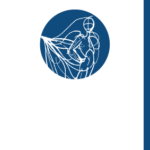Abstract
The purpose of this study is to evaluate the effectiveness of radial shock waves in myofascial upper trapezius syndrome
following the global treatment scheme of key trigger points.
Materials and methods
26 patients treated with rESWT (Radial shock wave therapy) after a global postural and myofascial assessment of the
patient and the identification of the key trigger points.
At the end of the treatment each subject was re-evaluated through the Numerical Rating Scale - NRS and through the
examination with Electronic Baropodometer.
In this study, we compared the values of NRS and the values of postural biometrics before and after 2 sessions of
rESWT, and a statistically significant difference (P <0.05) in all measurements emerged in the values measured with
NRS.
In the static percentage load, a statistically significant reduction in the percentage load differences (right / left) (P
<0.05) was observed in all three evaluation moments (T0, T1, T2).
The percentage and statistically significant improvement (P <0.05) were recorded at time T2 in the surface of the
ellipse.
Greater control of balance and greater awareness of the base of support was found in the calculation of the sway path,
in particular with closed eyes.
Based on this experience, the use of radial shock waves in pathologies related to myofascial pain with postural
implications would be desirable.

This work is licensed under a Creative Commons Attribution-NonCommercial-NoDerivatives 4.0 International License.
Copyright (c) 2021 Journal of Advanced Health Care





